Introduction
In today's competitive business landscape, reducing the Cost of Goods Sold (COGS) is a top priority for CFOs. To achieve this, CFOs need practical strategies that not only cut costs but also enhance operational efficiency and maintain quality. From optimizing production processes and negotiating with suppliers to implementing lean manufacturing and leveraging technology, there are numerous approaches that can drive down COGS.
By streamlining supply chain operations, improving inventory management, and embracing alternative production methods, businesses can achieve leaner operations and gain a competitive edge. Furthermore, by incorporating quality control measures and implementing cost-effective procurement strategies, CFOs can ensure that cost reduction efforts align with sustainable business practices. In this article, we will explore these strategies in detail, providing actionable insights to help CFOs achieve cost savings without compromising quality or efficiency.
Optimize Production Processes
Streamlining production processes is a fundamental step to reducing the Cost of Goods Sold (COGS). By meticulously analyzing each stage of production, companies can pinpoint and rectify inefficiencies, enhance workflow efficiency, and elevate productivity. For instance, the recycled paper industry exemplifies how embracing innovation can lead to significant cost savings while promoting sustainability. This sector, which employs over 100,000 individuals and generates around $90 million in annual revenue, has demonstrated that by recycling paper, it's possible to reduce the environmental impact significantly. Recycled paper can be reused up to seven times, cutting down on the need for new raw materials and the volume of water utilized in production.
Likewise, adopting nearshoring strategies by shifting manufacturing closer to home can result in reduced labor and operational expenses while maintaining quality control. Furthermore, the digital transformation of production chains, highlighted in a study published in Management Science, is changing how goods are produced and distributed. By utilizing internet-enabled technology, companies can enhance the coordination among various production units, potentially resulting in a more integrated and efficient production system.
Additionally, the 9th Annual State of Smart Manufacturing Report reveals that an overwhelming 95% of manufacturers are either using or evaluating smart technologies. This surge in adoption is geared towards achieving competitive advantages and fostering profitable, sustainable growth. Through the strategic implementation of data analytics, manufacturers can optimize processes, such as predictive downtime reduction, harnessing sensor-generated data to proactively maintain equipment and prevent costly disruptions.
By integrating these insights into production optimization strategies, businesses can attain a delicate equilibrium: lowering expenses without sacrificing the quality, all while keeping up with technological advancements and market trends.
Negotiate with Suppliers
To drive down the Cost of Goods Sold (COGS), it is essential to leverage data-driven negotiation strategies with suppliers. A comprehensive approach includes analyzing service issues, such as frequency and severity of outages or product bugs, which can bolster your position when negotiating service level agreements with penalties for underperformance. Additionally, maintaining a detailed usage history aids in understanding the value derived from a supplier's products or services over time.
Supply Chain Finance (SCF) is an innovative solution where a financial institution pays suppliers on behalf of a customer, allowing suppliers to receive early payment minus a fee. This arrangement gives suppliers immediate cash flow and customers extended payment terms, benefiting both parties' financial stability.
Developing a 'should expense' model is another effective approach. By deconstructing a product into its components and estimating the value of materials, labor, overhead, and profit margins, you gain insight into fair pricing. This model, supported by industry data and average expenditure structures, enables negotiations that reflect the dynamic nature of expenses and prices.
For tangible assets, the 'total ownership analysis' is crucial. It takes into consideration the expenses, such as buying price and upkeep, as well as the non-tangible expenses like administration, assistance, and periods of inactivity, which are frequently undervalued during the procurement stage but have a substantial effect on the budget in the long run.
Furthermore, establishing a robust supplier relationship can yield numerous benefits. By improving trust, transparency, and communication, you can negotiate more effectively, potentially resulting in price reductions and a mutual exchange of cost information, which can streamline production and supply chain procedures.
Incorporating these strategies—guided by the principle of 'if you want to go far, go together'—can transform procurement from a transactional function into a strategic asset that drives innovation and value across the organization.
Improve Operational Efficiency
Enhancing operational efficiency is crucial for minimizing the Cost of Goods Sold (COGS). By meticulously evaluating and honing processes such as inventory control, production scheduling, and order processing, companies can eliminate inefficiencies, shorten lead times, and bolster overall productivity. The incorporation of advanced technologies, such as Enterprise Resource Planning (ERP) systems, plays a pivotal role in automating and enhancing organizational operations. Continuously monitoring and scrutinizing Key Performance Indicators (KPIs) is essential for pinpointing areas needing improvement and for gauging the success of the modifications made.
For instance, a case study from the hospitality sector reveals that the Salinas Maragogi and Salinas Maceió Hotels, by implementing Fortinet's solutions, not only enhanced their current operations but also future-proofed their WI-Fi and network infrastructure. Similarly, Nokia's forward-looking statements underscore their commitment to operational efficiency through strategic planning, product rollouts, and growth management, which are quintessential for sustaining competitiveness in dynamic markets.
Additionally, enterprises have been increasingly prioritizing 'operational efficiency,' as indicated by its frequent references in corporate earnings reports, indicating a shift towards reducing expenses and utilizing AI for improved productivity. According to Morgan Stanley analysts, this focus is not only a prevalent theme but also correlates with strong performance, indicating that operational efficiency is essential to success.
In the realm of environmental sustainability, over 50% of enterprises recently reported a lack of concern about the impact of climate change on their operations. Nevertheless, 50% of enterprises have implemented measures to decrease their carbon footprint, with the adoption of LED lighting being a typical initiative. This demonstrates a growing awareness and action towards sustainable operations, which can also contribute to cost reduction.
To maintain effectiveness, organizations should perform regular evaluations, which are essential for ongoing learning and enhancement, as highlighted by Brian Joiner's approach to optimizing systems rather than individual components. This systemic approach ensures that all parts of the organization operate cohesively, leading to more effective overall performance.
Dr. Jan Yager's time management insights resonate with the need for organizations to avoid distractions and focus on activities that yield the most significant results, aligning with Pareto's principle that 80% of outcomes stem from 20% of efforts. Such strategic concentration on high-impact tasks can lead to significant improvements in operational efficiency and a reduction in COGS.
Lastly, embracing innovation is paramount, as it serves as a catalyst for improvements in efficiency. Tom Gilb's 'Planguage' method exemplifies a multidimensional approach to cost engineering, which aids in avoiding miscalculations and ensuring successful project economics and value delivery. These innovative practices are instrumental in transforming productivity and promoting economic success.

Inventory Management Strategies
A strategic approach to inventory management is pivotal in curtailing the Cost of Goods Sold (COGS), thereby propelling a business towards leaner operations. By implementing a precise inventory tracking system, companies not only prevent the costly pitfalls of overstocking or understocking but also streamline their entire supply network process. Techniques such as Just-In-Time (JIT) inventory management, coupled with sophisticated demand forecasting methods, are instrumental in maintaining an equilibrium between inventory levels and consumer demand, which in turn minimizes holding costs.
Furthermore, rigorous inventory control measures, including regular cycle counts, are essential for maintaining inventory accuracy. For instance, the Duty Drawback program utilizes a data-driven approach to reclaim duties, taxes, and fees on exported goods, highlighting the significance of strong data analysis in optimizing supply network operations and reducing unnecessary expenditure. The implementation of a sophisticated inventory management system can greatly improve this procedure, guaranteeing the retrieval of duty demands a strong connection between all pertinent data within the global supply network, and that companies are capable of handling and visualizing their complete end-to-end processes effectively. This system not only increases efficiency but also mitigates the risk of stockouts or excess inventory, which can erode profit margins.
Implementing these approaches not only enhances operational efficiency but also aids in establishing a competitive pricing structure by reducing tariff expenses, which can be a substantial benefit in the current global market. As we transition towards a more interconnected and complex global supply chain, the incorporation of technology and strategic inventory management becomes more and more vital for businesses aiming to enhance operations and uphold customer satisfaction while effectively managing expenses.
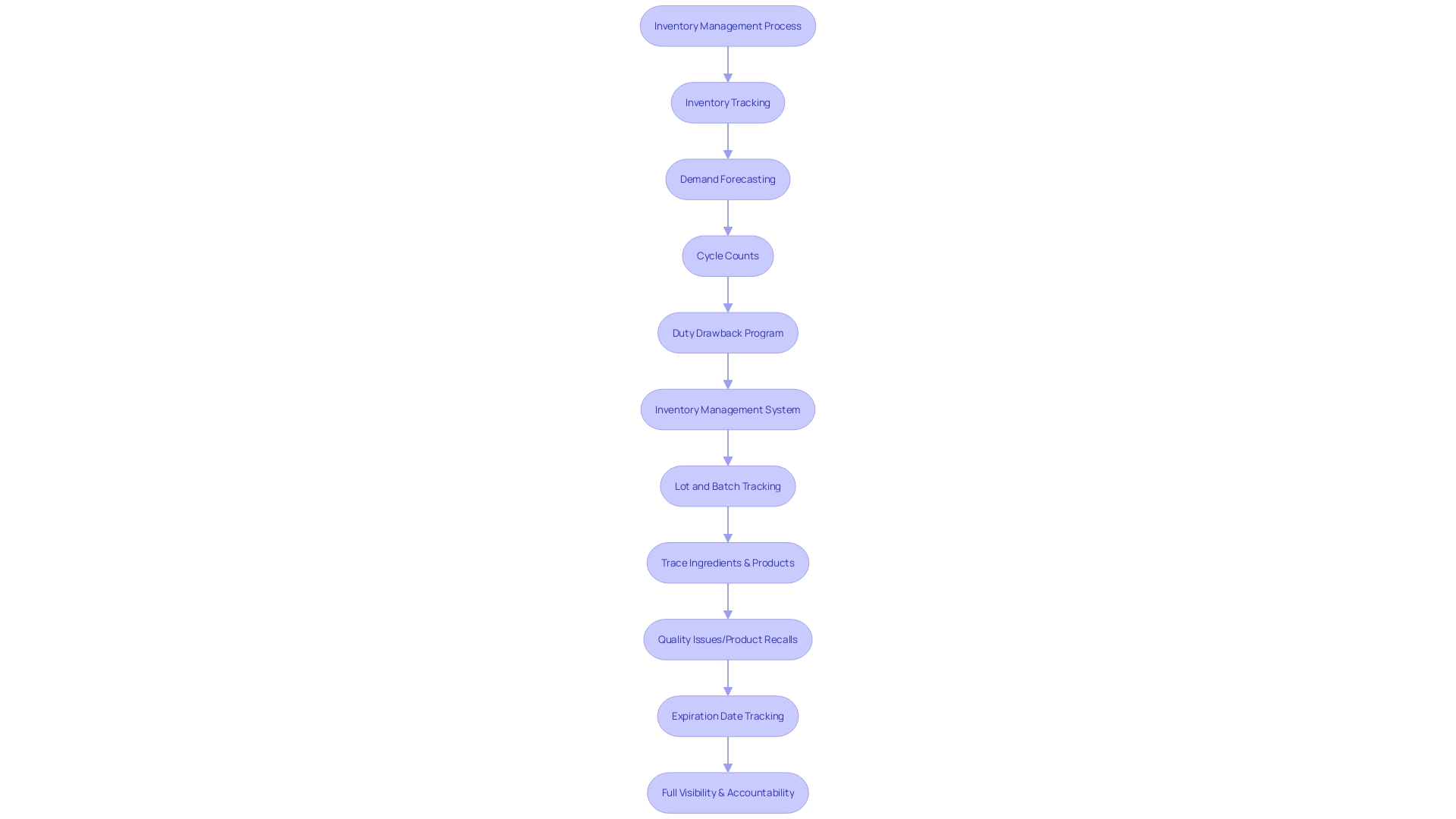
Implement Lean Manufacturing
Adopting lean manufacturing principles not only reduces the Cost of Goods Sold (COGS), but it also ensures a more efficient production process by cutting out waste and focusing on quality enhancement. Techniques like value stream mapping, continuous improvement, and 5S workplace organization are utilized to identify and remove unnecessary steps in production, resulting in direct savings. This approach shifts the emphasis to activities that add value, fine-tuning operations for maximum efficiency. Case studies have shown that maintaining a secure and compliant supply network is critical and lean manufacturing aids in achieving this by improving order tracking, purchase order management, and ensuring on-time in-full (OTIF) delivery. These strategies align with the broader goal of keeping operational costs in check while meeting regulatory standards and managing resources effectively. Businesses that have successfully implemented lean principles offer a model for others seeking to optimize their processes and gain a competitive edge in quality and performance.
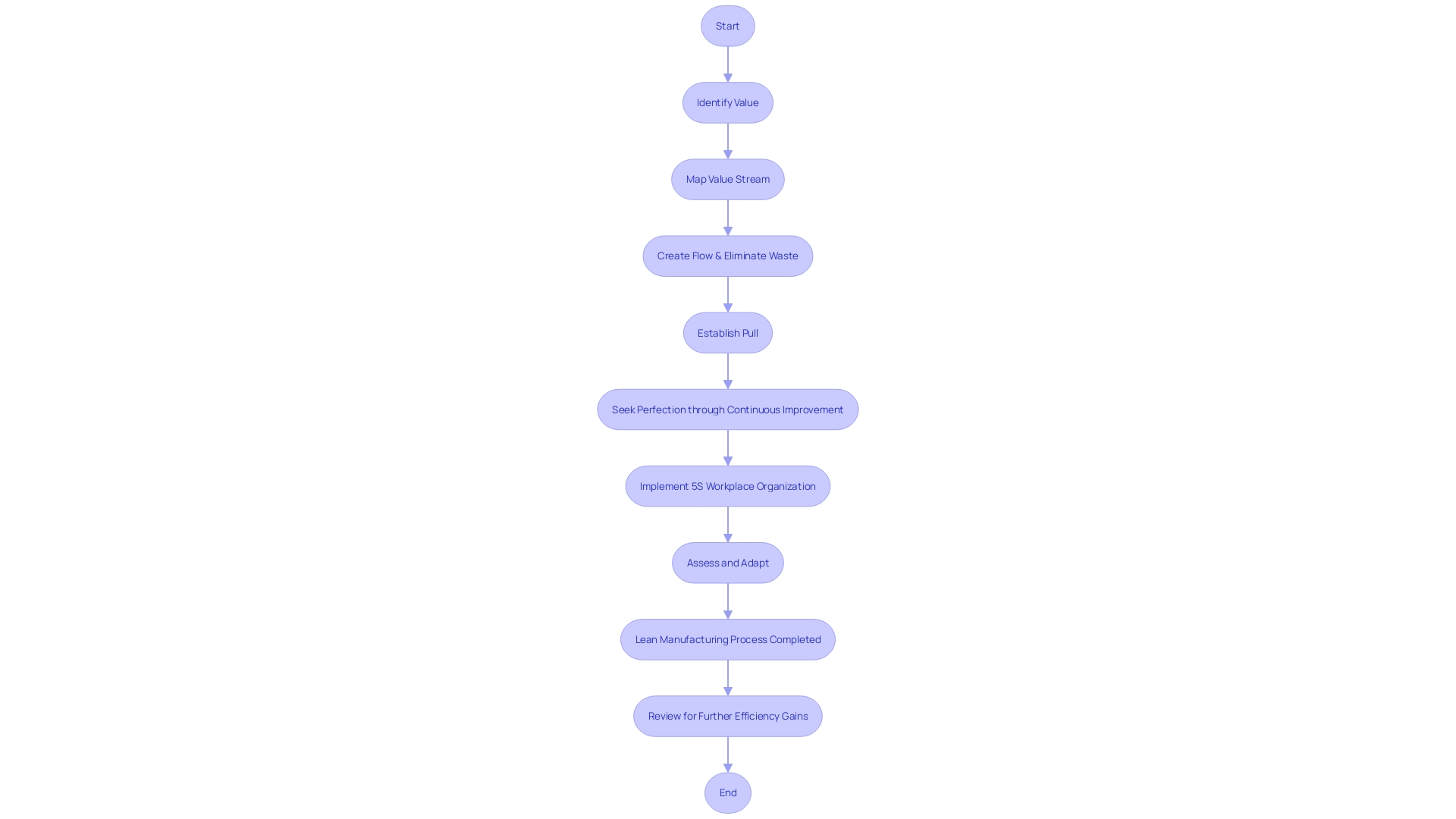
Use Quality Control Measures
To ensure the integrity of products and services, and to minimize the Cost of Goods Sold (COGS), businesses are focusing on enhancing quality control measures. It is critical to establish high standards from the outset to mitigate the costs linked to defective products, which include waste, rework, and customer returns. Successful approaches for this involve implementing thorough inspection routines, statistical control, and comprehensive staff training.
For example, M&T Bank, with its 165-year tradition of innovation, tackled the challenge of upholding software quality to meet the banking industry's stringent security and regulatory demands. They instituted Clean Code standards to maintain and enhance the performance of their digital platforms.
Similarly, in the healthcare sector, the adoption of new digital technologies undergoes strict evaluation for compliance and security before implementation. This is to ensure that the solutions are not only effective but also meet the quality and regulatory standards necessary for patient care.
The commitment to quality and standardization is not just a benchmark; it's a commercial imperative. Third-party certifications to internationally recognized standards are now fundamental for businesses to operate in the global marketplace. This certification procedure assists companies in recognizing vulnerabilities, controlling risks, and strengthening stakeholder confidence.
The journey towards quality excellence is supported by statistics from the World Quality Report, which highlights the economic benefits of a robust quality management system (QMS). A QMS is a structured system that documents activities, responsibilities, and procedures necessary to achieve higher customer satisfaction and operational efficiency.
As the UK's Gilt Edged demonstrated with its carbon footprint reduction efforts, identifying and focusing on key areas of improvement can lead to significant operational advantages. The company's utilization of a simple, accessible carbon calculator aligns with the larger goal of meeting net-zero emissions by 2050, showcasing that quality management extends beyond products and services to encompass environmental responsibility.
Incorporating a comprehensive approach to quality, as the Japanese notion of quality control suggests, encompasses excellence in products, procedures, and people. It's a comprehensive management philosophy that goes beyond traditional quality control measures, aiming for excellence throughout the organization.
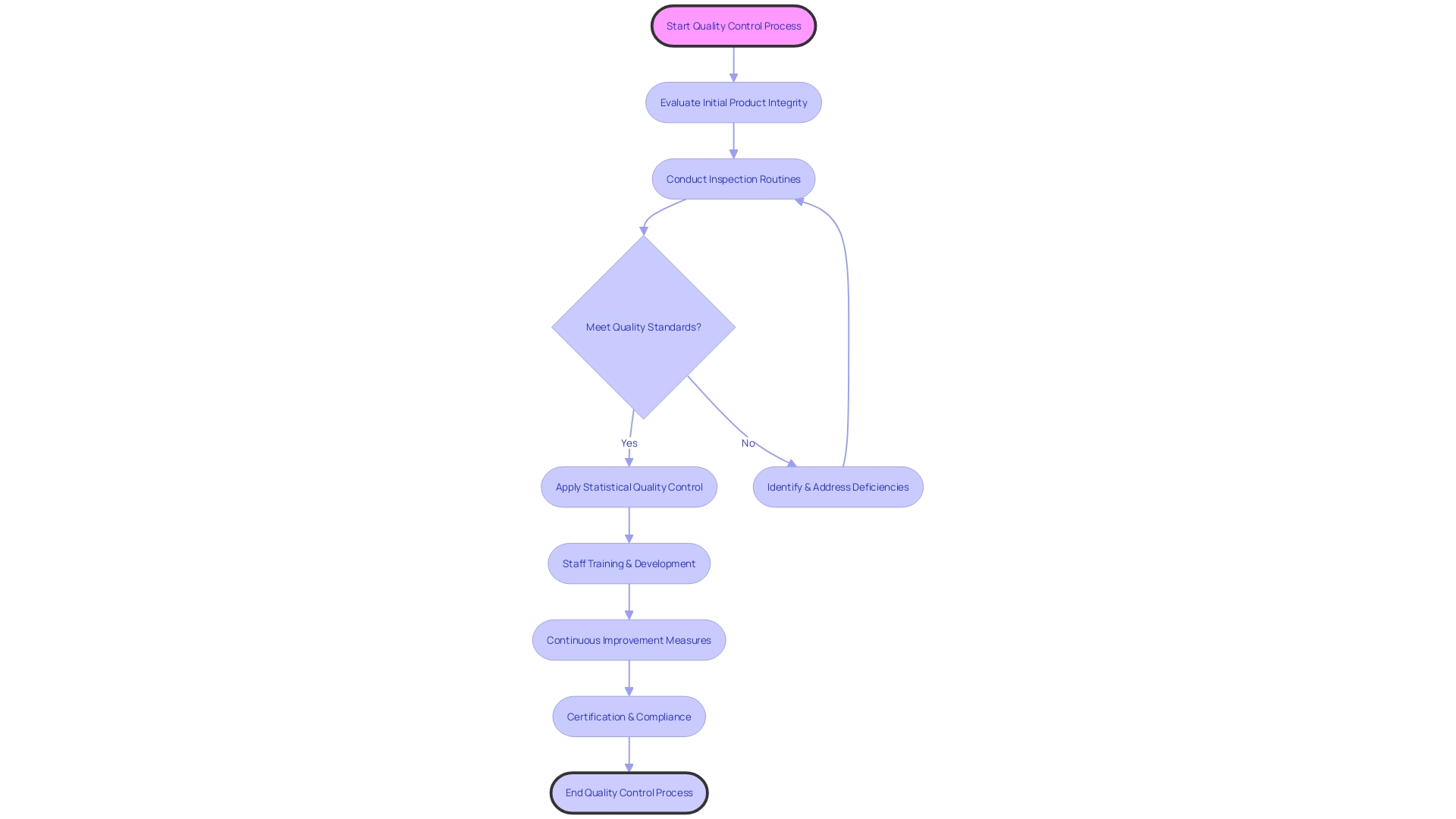
Consider Alternative Production Methods
Revamping production processes is a strategic move to reduce the Cost of Goods Sold (COGS). A shift in manufacturing techniques, material choices, or supplier options can have a significant impact. For example, assessing the advantages of outsourcing or contract manufacturing could reveal significant financial benefits. Moreover, embracing technological advancements and automation can streamline operations, culminating in decreased labor expenses. It is crucial for companies to maintain an agile approach, as evidenced by a recent report which indicated that 56% of companies have enhanced their manufacturing agility, reflecting positively on their adaptability and financial performance. Strategic material sourcing and processing, as emphasized in industry discourse, are also crucial for expense reduction. Using recycled materials, for instance, can not only lower expenses but also align practices with sustainable initiatives – a move that Apple and other leading companies have successfully implemented. By integrating creative solutions and materials into production, companies can establish a more efficient and cost-effective manufacturing ecosystem.
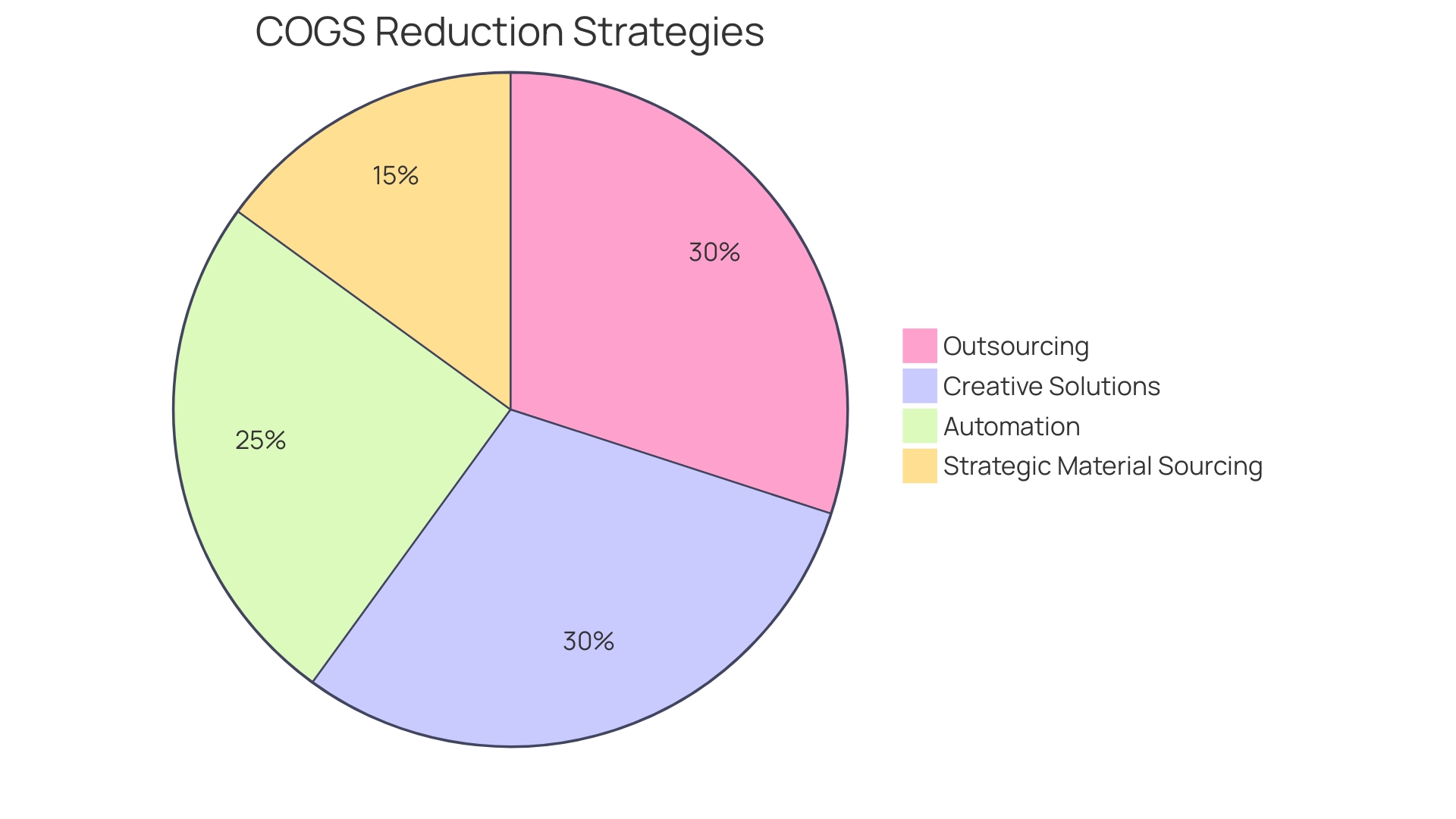
Leverage Technology and Automation
Embracing the power of technology and automation proves to be a game-changer in reducing the Cost of Goods Sold (COGS). Sophisticated inventory management systems and production planning software, coupled with the insights garnered from predictive analytics tools, enable businesses to fine-tune their operations for peak performance. The precision and efficiency of these technologies mean a substantial reduction in manual labor, minimizing human error and bolstering productivity. For instance, Surrey County Council experienced firsthand the transformative impact of automation, enhancing services for over a million citizens. Similarly, Louvre Hotels Group witnessed a remarkable operational improvement by automating rate code maintenance, saving hundreds of hours monthly. As such, automation is not just a tool but a strategic ally in the pursuit of operational excellence and cost-effectiveness.
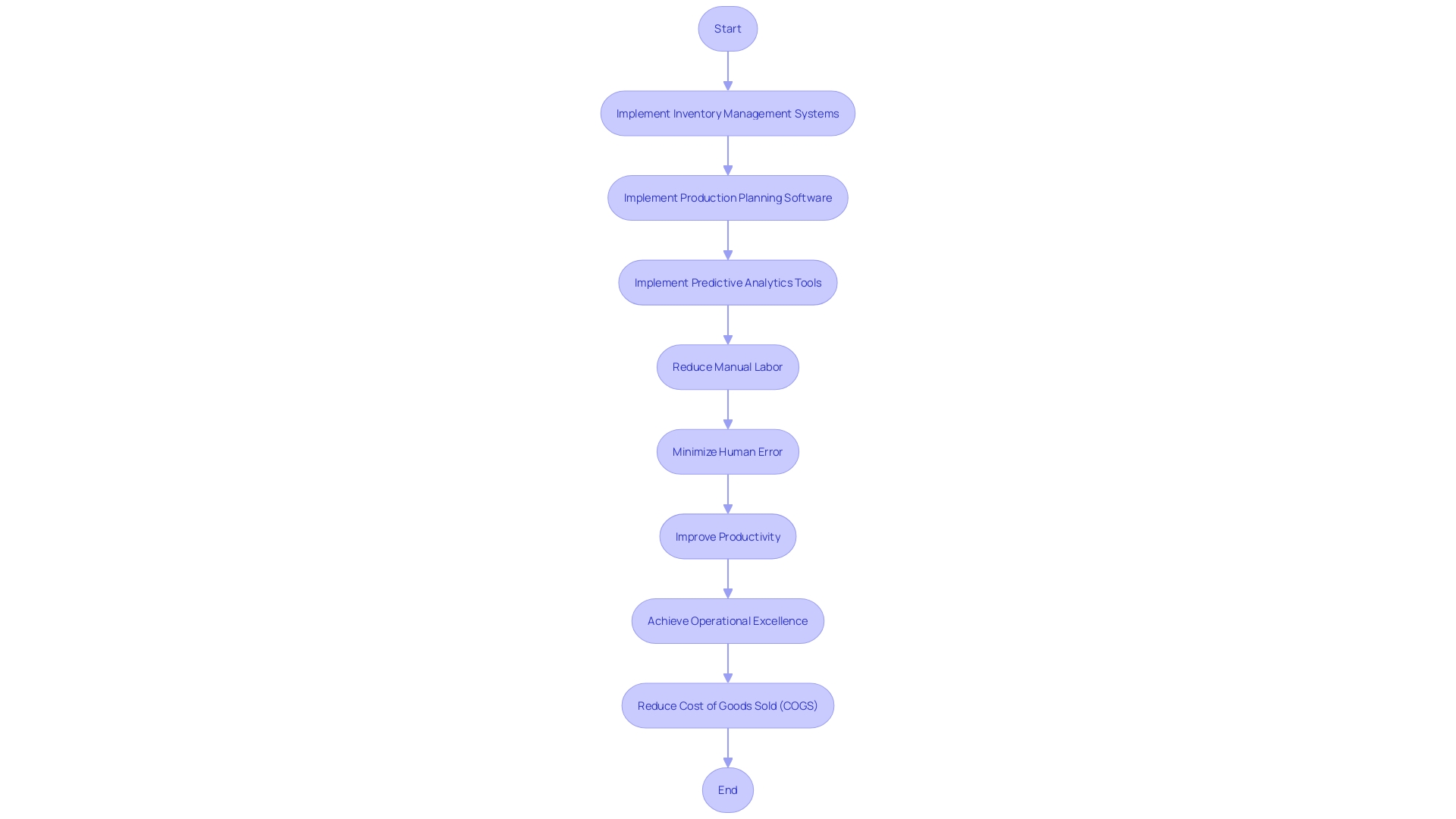
Streamline Supply Chain Operations
Optimizing supply network operations is a pivotal strategy in reducing the Cost of Goods Sold (COGS). A crucial aspect of this process is supply chain visibility, which allows for tracking and monitoring products, materials, and information throughout the supply chain. This visibility is not only about the physical flow of materials but also involves analyzing real-time data to make informed decisions that can minimize transportation expenses and streamline logistics.
For instance, implementing vendor-managed inventory (VMI) systems can lead to more efficient inventory management, reducing the amount of capital tied up in stock. It can also foster stronger supplier relationships, which is essential considering that collaboration can result in savings and improved operational efficiency. Companies are increasingly exploring cross-docking techniques to minimize handling and storage times, combining shipments to enhance transportation efficiency, and ultimately reduce expenses.
An all-encompassing method for managing the flow of goods, which takes into account durability and streamlining as a whole, can also aid in decreasing operational expenses. This involves not only knowing where your assets are at any given time, thereby avoiding unnecessary costs from misplaced or stolen items but also being prepared to adapt to unforeseen disruptions. Sustaining a robust supply network means being able to recover rapidly to a state of normalcy or an even more desirable one after a disruption.
Furthermore, with more than 60% of businesses looking to implement advanced inventory and network optimization tools, the emphasis on supply network design is becoming increasingly common. An ideal supply network can offer a competitive edge, with studies showing a potential reduction of up to 15% in supply expenses, significantly decreased inventory holdings, and considerably faster cash-to-cash cycles for organizations with optimized networks.
Phil Reuben, executive director at SCALA, emphasizes that there is no one-size-fits-all solution when it comes to supply network and logistics strategies, particularly in the context of mergers and acquisitions. Every organization encounters distinct obstacles, and therefore, a meticulously customized approach is crucial for attaining the maximum profits while effectively handling expenses, hazard, and corporate transformation.
In summary, by leveraging supply chain visibility, embracing digital transformation to optimize operations, and focusing on resilience and holistic network design, companies can significantly reduce COGS and enhance overall supply chain efficiency.
Implement Cost-Effective Procurement Strategies
To optimize expenses of goods sold (COGS), a strategic approach to procurement is essential. By leveraging digital transformation, companies can evolve from traditional cost-centric procurement to a strategic function that adds value and supports corporate growth. This involves embracing approaches that are not exclusively focused on expense reduction but also on sustainable economic value. For example, by utilizing digital tools to evaluate suppliers, businesses can engage in competitive bidding and manage contracts more effectively, securing favorable prices and terms while also ensuring supplier performance aligns with company goals. Furthermore, investing in technologies such as advanced routing software and telematics can greatly decrease transportation expenses, resulting in a reduction of both financial burden and environmental impact. Integrating renewable energy sources and automation in operations can further drive down electricity usage and waste, contributing to both cost savings and sustainability objectives. Ultimately, by adopting these innovative practices and continuously adapting to technological advancements, procurement can play a pivotal role in an organization's financial and environmental strategy.
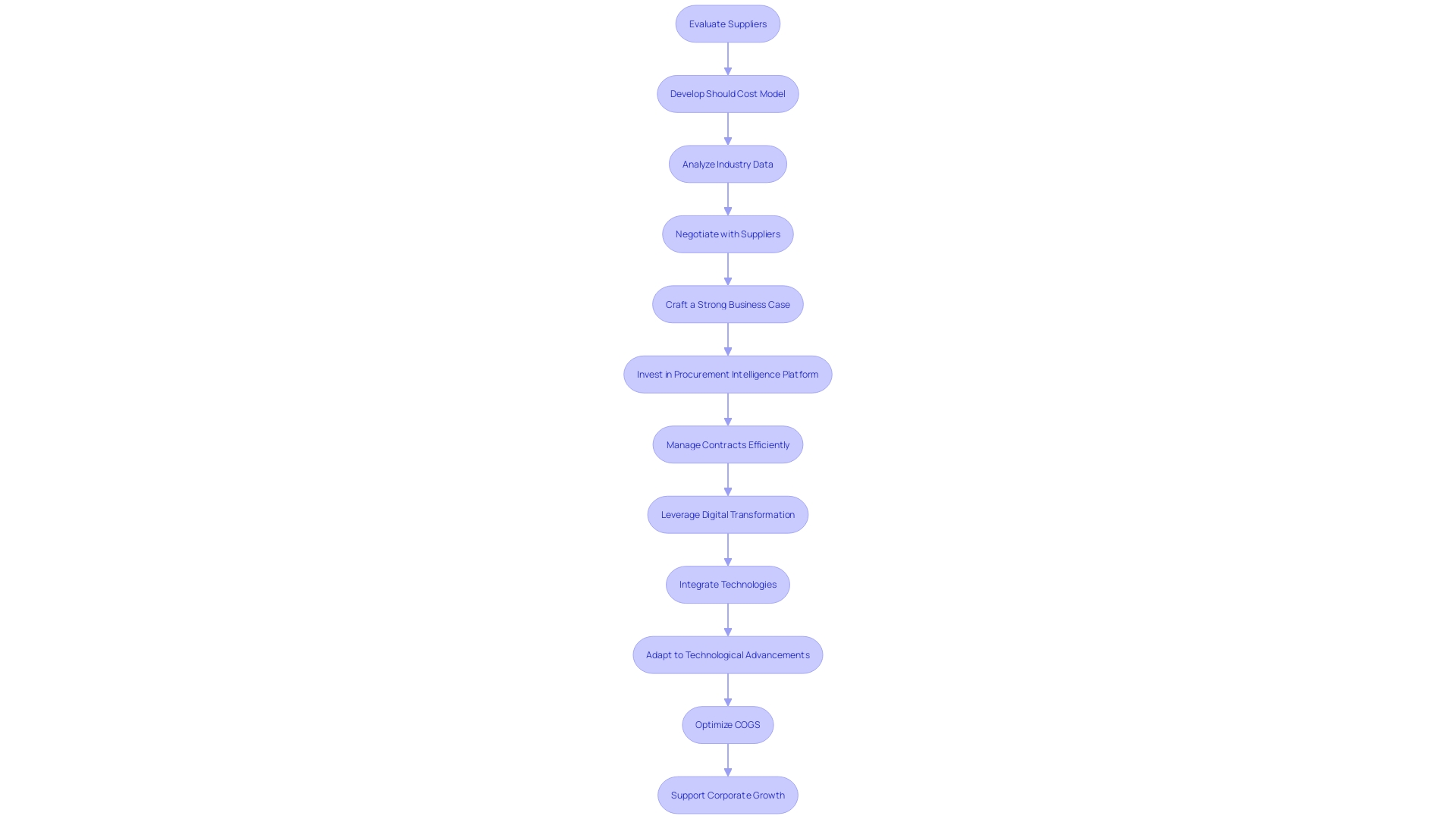
Conclusion
In conclusion, to reduce COGS without compromising quality or efficiency, CFOs should focus on optimizing production processes, negotiating with suppliers, improving operational efficiency, implementing effective inventory management strategies, adopting lean manufacturing principles, using quality control measures, considering alternative production methods, leveraging technology, streamlining supply chain operations, and implementing cost-effective procurement strategies.
By streamlining production processes, companies can identify and rectify inefficiencies, embrace innovation, and reduce environmental impact. Negotiating with suppliers using data-driven strategies and establishing robust relationships can lead to cost savings. Enhancing operational efficiency through advanced technologies and monitoring KPIs ensures continual improvement.
Implementing inventory management strategies like JIT and demand forecasting minimizes holding costs. Adopting lean manufacturing principles eliminates waste and improves order tracking and delivery.
Using quality control measures, such as rigorous inspections and comprehensive staff training, prevents costly defects. Considering alternative production methods, such as outsourcing or embracing technology, can significantly impact costs. Leveraging technology and automation reduces manual labor and boosts productivity.
Streamlining supply chain operations through visibility and resilient network design optimizes logistics and prepares for disruptions. Implementing cost-effective procurement strategies adds value and contributes to financial and environmental goals.
By incorporating these strategies, businesses can achieve leaner operations, cost savings, and sustainable practices. CFOs can drive down COGS and gain a competitive edge.




